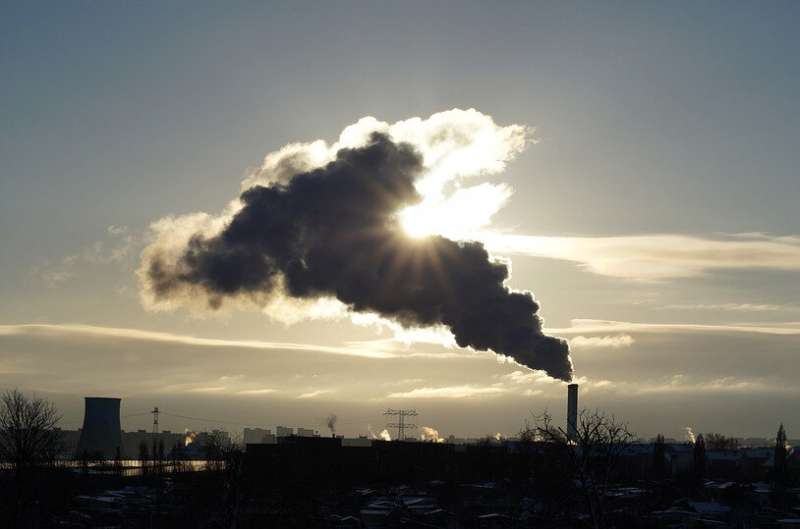Suffocating ozone—policies that stem emission of precursor chemicals save lives and crops

Nitrogen, volatile organic compounds and sunlight are the three ingredients that form the smog that regularly chokes people and plants, causing tens of thousands of respiratory-related deaths and nearly a billion dollars of crop loss each year. An international team of environment and atmospheric researchers led by Drexel University suggest that hundreds of lives and hundreds of millions of dollars in crops could be saved by implementing policies that would reduce emissions of the key ingredients by just 10 percent.
In their study, which was recently published in the journal Environmental Research Letters, the team, led by Shannon Capps, Ph.D., an assistant professor in Drexel's College of Engineering, traced the precursors of air pollution over space and time across the U.S. to understand why it forms where it does and what specific steps can be taken to curtail it.
"One of the goals of this study was to show that this modeling system can aid in designing efficient emissions control strategies that consider multiple aims," Capps said. "We also wanted to know whether the approach to regulating ozone motivates different control strategies than may be optimal for protecting public welfare, like crops."
The model they created draws on information from previous research that shows where in the United States ground-level ozone concentrations are highest—above safer levels—and what the nitrogen and VOC emissions are like in those areas.
By cross-referencing those air quality measures with datasets from the Environmental Protection Agency, about effects of long-term exposure to ozone, and the Department of Agriculture, about ozone's effect on crop and plant productivity, they were able to extrapolate just how much nitrogen and VOC emissions affect our health and well-being.
"Having a map of where marginal emissions reductions may benefit human health and crop productivity greater than average is an important new development," Capps said. "For example, we found that by cutting nitrogen and VOC emissions by just 10 percent in certain areas, nearly 900 lives could be saved."
According to the study, this would mean policies to curtail ethane and propane emissions, which are the largest human-made culprits among VOCs. In urban areas, where these gases and nitrogen oxides are present in high levels from vehicle exhaust, VOCs are the primary contributor to ozone formation.
Nitrogen emissions played a larger role in affecting the productivity of plants and crops. For crops like potatoes, soybeans and cotton, nitrogen emissions were linked to a 3-4 percent loss in productivity. For a $27 billion industry, like soybeans, that's a substantial hit.
The group plotted crop productivity loss data on a map to show the effect of VOC and nitrogen emissions traveling across state lines. A stark example of this, the authors note, is modeling a 10 percent emissions reduction in California projecting an increase in soybean yield in the central U.S. Similarly, their maps of tree productivity loss also reflect the effects of California's emissions on eastern cottonwood trees found in the center of the country.
"The tools that we used could easily be applied by local or state governments to reduce these losses due to ozone exposure," Capps said. "In addition, the EPA is currently reviewing the National Ambient Air Quality Standard for ozone; in this process, they will evaluate whether having the same standard for protecting human health and public welfare is the way that they would want to proceed."
These findings are the latest in an ongoing examination by Capps and her colleagues of the effects of emissions and modeling the impact of policies that would curtail them. As states and municipalities increasingly consider implementing policies to reign in emissions, granular geographic data like this study will play an important role in guiding these efforts.
More information: Congmeng Lyu et al. Elucidating emissions control strategies for ozone to protect human health and public welfare within the continental United States, Environmental Research Letters (2019). DOI: 10.1088/1748-9326/ab5e05
Journal information: Environmental Research Letters
Provided by Drexel University





















